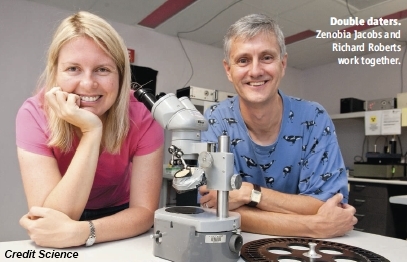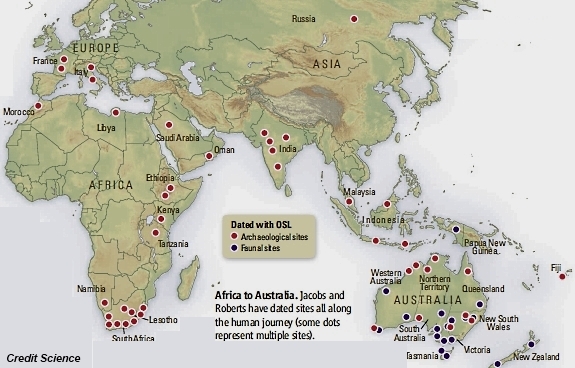|
|
|
|
|
|
|
News & Views item - May 2011 |
![]() University of Wollongong Duo World's Best in Optically Stimulated Luminescence
Dating. (May 23, 2011)
University of Wollongong Duo World's Best in Optically Stimulated Luminescence
Dating. (May 23, 2011)
 TFW
has long advocated that public research dollars should target the group not the
institution while the Group of Eight, occasional lip service to the contrary,
pushes for increasing its institutional cut (the Go8 universities currently
collect about 70% of the contestable funding from the Australian Research
Council (ARC) and the National Health and Medical Research Council.
TFW
has long advocated that public research dollars should target the group not the
institution while the Group of Eight, occasional lip service to the contrary,
pushes for increasing its institutional cut (the Go8 universities currently
collect about 70% of the contestable funding from the Australian Research
Council (ARC) and the National Health and Medical Research Council.
A three page feature in the May 6, 2011 issue of Science is a good case in point as to why the viewpoint of the Go8, and which has been reflected in the past by the newly installed Chief Scientist, Ian Chubb, should be treated with caution if not downright scepticism.
In its latest ranking of research universities the Institute of Higher Education of Shanghai Jiao Tong University (SJTU) lists the University of Wollongong in the 301-400 group, with a regional (Asia/Pacific) ranking of 44-68, and 10-13 within Australia. Neither does it make the top 100 institutions in any of the specific categories listed by SJTU.
On the other hand Science's profile of Zenobia Jacobs (ARC QEII Research Fellow) and Richard Roberts (ARC Australian Professorial Fellow, Director, Centre for Archaeological Science) at the University of Wollongong place them at the top of world rankings in the field of optically stimulated luminescence dating (OSL). The method determines how long buried sand grains have been hidden from sunlight and can peer back 200,000 or more years in time, with remarkable precision.
Over the past decade they have received grants of about $7 million from the ARC.
Thomas Higham, Deputy Director of the Oxford University Radiocarbon Accelerator Unit, and administer the Unit's archaeological dating programmes, of Jacobs and Roberts says simply: "[Their] laboratory is widely acknowledged to be the world's premier [OSL dating] facility."

As one example of the finesse of their work, last year Professor "Roberts [together with Barry Brook of the University of Adelaide] demonstrated that Australia had first been occupied by modern humans between 45,000 and 50,000 years ago, in contrast to earlier claims of up to 60,000 years ago. These dates, which could not have been achieved using radiocarbon, also suggest that humans were largely responsible for the extinction of Australia's giant birds and supersized kangaroos, which disappeared about 40,000 years ago (Science, 22 January 2010, p. 420)".
As Science's Michael Balter put it: "When University of Pennsylvania archaeologist Harold Dibble was reopening excavations at the Grotte des Contrebandiers (Smuggler's Cave) in Morocco a few years ago... he recruited two dating aces from the University of Wollongong in Australia, Zenobia Jacobs and Richard Roberts, experts in the technique of optically stimulated luminescence (OSL) dating. [Now] working beyond radiocarbon's limits, the pair will use the single-grain technique at both Neandertal and modern human sites in an attempt to pinpoint when sophisticated behaviors arose in each group. 'They will get a resolution that otherwise would not be possible,' Dibble says."